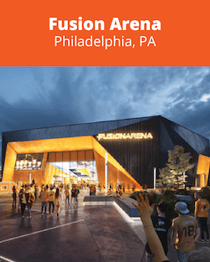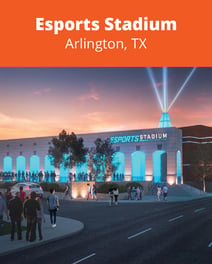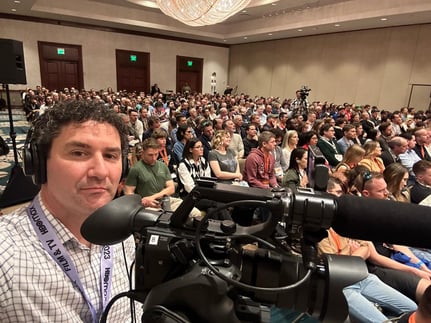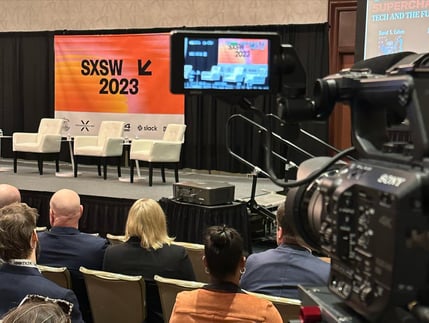Another year at a showcase of the best in broadcast. At least that’s what I like to call it.
was held at the Las Vegas Convention Center in Las Vegas, Nevada, this year with a show attendance of approximately 61,000 professionals registered. This is a dip from last year’s attendance numbers but an increase for first-time attendees who represented 54% of attendees.
The event itself is always intimidating for first-time attendees as the convention halls by themselves are absolutely enormous, let alone 3 that are filled with vendors and manufacturers and that is not inclusive of all the additional meeting and learning spaces located on other floors and in nearby hotels. The renovations taking place at the Las Vegas Convention Center did make the convention halls feel even more spread out than they typically are but the way the exhibition halls are organized and categorized by production division always makes it more manageable.
There seemed to be more of a focus on booths than on stages like the last few years as larger vendors, like
, had their own stage and presentation schedules to highlight updates, workflows, and collaborations. This move to vendor stages make the free exhibit hall passes worthwhile, but I could also understand how this could further confuse newbies to NAB since the schedules for these specific sessions are not found on the NAB mobile app or on the website since it is not technically put on by NAB.
The
conference is truly an indication of the heartbeat of our industry and a look into what is not only possible but actually implementable.
So what were the latest trends out of NAB?
Trend 1: Pro AV & Broadcast Tools
Pro AV is using broadcast tools. For people in the Pro AV world, you might be thinking: “Duh. This isn’t news.” Well, I would like to inform you that the broadcast world didn’t really want to fully acknowledge it until this year when someone spelled it out on the main stage and someone in the audience chuckled. Many more vendors were accustomed to hearing about conference room workflows and integrated their gear for those use cases. If you work in Pro AV, I would also instruct you to consider making a pilgrimage to NAB to scope out the gear since many vendors admitted to significantly scaling back their displays for Infocomm. Maybe this narrative shift will change their minds, maybe not. But you could be missing out on a solution.
Zoom had a presence at the OfficeHours booth in Central Hall as Andy Carluccio, the man behind ZoomISO and all the wonderful new API additions, made several announcements that piqued the interest of our team including continued advancements on multilingual workflows, the new Liminal app “Tiles” and Zoom Rooms Pro AV feature expansions to include Dante, NDI and hardware expansion cards.
Microsoft Teams had their usual spot out near Epiphan where they integrate into their cloud system. But no major updates from Teams or Cisco Webex were present on the NAB Show floor.
In addition, one-man-band kits for the AV world were prevalent all over the show floor, many trying their shot at Blackmagic’s ATEM Mini, with a bit more function and a few more features. Traditional TDs would appreciate the addition to the tiniest little T-bars I have seen in my life and a mix of both SDI and HDMI inputs, sparing a possible need for converters for that pesky mix of SDI cameras and presentation PCs.
Trend 2: SPMTE 2110 & IP Video
I have been to the last two NAB shows and I wish the Vegas Strip had prop bets on industry trends because I would be up. IP and
infrastructures have become more common in large broadcast operations. After a rapid surge of technological advances, we seem to have hit a stabilization point, a safe enough time to get gear that should have a shelf life that won’t become irrelevant too quickly. Blackmagic Design continues to pivot hard into the space to force the larger manufacturers to take an inward look at their pricing models.
In terms of IP and streaming some manufacturers, like Sony and Teradek, have created their own protocols that are faster than open-source protocols, like SRT. However, it requires you to exist within their proprietary ecosystem.
RIST and JPEGXS are the other protocols that have begun to pick up steam after the pandemic stumbling block and navigating around the SRT surge. More and more manufacturers and developers are now beginning to prioritize work with these protocols.
I brought up AV1 a few times to try and peek at roadmaps and was shut down so many times I stopped asking.
Trend 3: NDI 6
Newtek’s newest update to NDI deserved its own trend space rather than to be bundled up into IP workflows. NDI 6 was the bell of the ball this year. NewTek announced their open Beta right before NAB and the first feedback has been brow-raising.
Announced new features include:
- Native HDR and 10+ bit color support.
- Meets broadcast industry demands for professional-grade video streaming over IP.
- Broad compatibility with support for PQ and HLG formats, extending streaming to most HDR and non-HDR devices.
- WAN connectivity embedded into cameras through NDI Bridge utility for hardware.
- Enable sending encrypted NDI streams over a WAN for secure, remote real-time collaboration.
More features and updates are to be announced from the roadmap, but the creator of NDI did tease the roadmap for NDI audio during a presentation at the VizRT booth on Sunday.
NDI’s software is free and was prevalent throughout the entirety of all 3 expo halls. Every workflow has at least one compatibility or another. It is a low-cost, high-reward solution for video production.
BUT
You need to work with your IT team to integrate NDI. For high performance, it should be set up on its own VLAN or even its own independent network. NDI uses multicast traffic and when using full bandwidth NDI it can affect the entire network.
You may have heard of NDI|HX3. Full NDI provides the highest quality of video transmission, while NDI|HX3 offers a balance between image quality and network bandwidth making it an ideal option for use cases where network bandwidth is limited. But it is not always available for certain hardware or software workflows so make sure you do your research about what version of NDI the software or hardware you are looking into implementing.
Trend 4: Cloud Tools
Everyone has developed a cloud tool or acquired and bundled cloud tools. Every major broadcast manufacturer now has a cloud production model in one form or another. From Grass Valley to Ross Video, it was no longer a flex but an expectation that the biggest booths were not highlighting just a video wall or a large jib but a variation of screens displaying active low latency cloud environments that are not theoretical but battle-tested. Cloud-native SaaS is now the norm for most large-scale broadcast vendors in one way or another.
I spoke about cloud production briefly the last time I was at NAB. The smaller HTML5 graphics products, some with simple NDI integration, have all landed themselves with integrations within the big players and continue to expand their reach. If you are looking for a way to streamline graphics for productions and have not looked at the different HTML5 tools available, the VizRt Flowics product is very robust but there are plenty of smaller players with fewer bells and whistles.
The saturation of smaller cloud tool companies has been snatched up and integrated into larger systems/companies allowing for more flexible and bundled services. For example, Backlight, a postproduction cloud service, now comprises of iconik, Celtx, cineSyne, Gem, Wildmoka, and Zype. Standing alone, Wildmoka is just a browser-based clipping tool but when tied into iconik it includes a post-production review process. Alone they are not much to talk about but together a powerful combination for a post-production team experiencing the burn of the content churn.
Trend 5: LED, XR/AR & Virtual Production (VP)
Demonstrations of virtual sets and tight-pitch LED walls took up significant square footage at NAB 24, showing the interest and strides made in the virtual production (VP) space over the past few years. Our team got a chance to view two different systems up close and personal: one from Unilumin and Vū and another from Planar and OptiTrack. Unilumin showed off its sophisticated LED technology in collaboration with Mark Roberts Motion Control (acquired recently by Nikon) with “The Unreal Ride.” Our own Jeff Eggleston got to experience this epic demo with motion cameras flying around on a virtual set while sitting in a car to enact a high-speed and dynamic scene. Back at the Unilumin booth, their team demonstrated a workflow that allowed them to use virtual production sets without placing marker points around a set to generate extended reality content. This new tech will save time and resources on a fast-moving production schedule.
On the other hand, Planar showed off to us their latest LED technologies and a more “traditional” VP workflow using their OptiTrack system. Nevertheless, it was impressive to see their system in full force and get an up close and personal view of its capabilities.
The Planar booth also showed off a curved, touchscreen LED wall that was responsive and quite impressive. While this tech seemed more suitable for news or sports outlets in the broadcast field, it is still stunning to see where these technologies are headed, especially as they become more affordable for companies in the studio production space.
Trend 6: AI
You thought I wasn’t going to talk about AI, didn’t you? The keynote was done side by side with an AI robot after all! AI was on the minds of quite a few booths and a hot topic of conversation, as it has been since the public release of ChatGPT3. The Adobe Firefly additions to Adobe Premiere were very exciting to see.
The whole idea of speeding up work for an increase in shorter turnaround times is critical. “Content is king” has been the coined phrase and has increased the churn for many post teams. More content, less time to do it.
For the post world present at NAB this was front of mind. Speed, reliability, and resilience were key. How long does this transfer take? Does this integrate into my cloud environment, or do I have to use yours? Can we do this in browser? How easy is it to share or encrypt? If you couldn’t answer these questions, you weren’t on the expo floor (or we missed you. It’s a big show.) Post is always well represented at NAB due to its affiliation with the film industry of course but they continue and will always be front of mind.
There were quite a few Language AI companies helping expand content reach regarding live translation. A lot of these products involved “side car” like features with a large library of languages at your disposal. The limitation to many of them is how many discrete outputs you can get. Accuracy and the amount of language output is something I always keep an eye out for as Multilingual streaming and events become increasingly prevalent. You also need to be sure that the LLM being used for translation is trained. For example, in one demo I was given was of a Spanish speaker for an event. I asked to try out the product with my elementary-level of Czech. I was impressed with the Spanish bidirectional output; I was not impressed by the Czech-to-English output. My accent is not that bad.
My warning is not that these tools don’t work, it is just to make sure you have a good litmus test for new tools and when moving away from live interpretation and stenographer solutions that the client is informed that they are not working with a foolproof solution. The question we ask ourselves as engineers and SMEs should always remain to be not “Could we?” it is “Should we?”
AI is a tool in the tool belt not a full replacement part for a workflow. Can you drive a car with a donut tire? Yes. That’s what AI is: reliable to a point.
Trend 7: Post-Production Collaboration
Frame.io is no longer the only game in town. There was a multitude of offers from companies such as Backlight, EditShare, BirdDog, and even Blackmagic. But if you need to fix a post-production workflow, LucidLink is the clear favorite. It is a standout in the post-production workflow space. Options for bring-your-own storage workflows (i.e., Google Cloud Storage, AWS S3, and Azure) to allow for a more seamless post workflow for editing teams. There are even a few former Frame.io people that work for LucidLink now. What we witnessed with LucidLink on the floor of NAB proved to be an excellent solution for the persisting snags we have when working on large-scale productions.
In addition to this Cloud as a local drive offering, LucidLink and BirdDog Cloud offer a real-time collaboration tool set for post-production teams. These companies’ offerings feature tools where a direct NLE plugin (to be used in Adobe Premiere Pro or DaVinci Resolve) allows editors to collaborate with their stakeholders in real-time, like a virtual meeting platform, to review footage and timelines to give feedback from anywhere in the world. For BirdDog, this product was developed during the Covid-19 pandemic with the likes of Netflix battle-testing this software set to continue in their content delivery pipeline. From what we saw, the quality of the streams is fantastic from both products to deliver high-quality AV for an in-person-like experience. These kinds of tools still have an excellent place in a highly globalized company like
to bring the edit suite closer to home.
Final Thoughts
There is always a lot to cover with NAB and my step count is always pretty reflexive of that. What you should take away is this:
- The pre-production process continues to expand as each year rolls around. Allocate the time to get the details right because as the audience grows, the people that can execute will get the right engagement from their consumer base.
- Make sure your teams can communicate and collaborate with the cloud tools in their arsenal.
- AI is a tool for teams to use. Not a tool to replace teams.
From the rise of cloud-powered solutions to the integration of AI, the event highlighted the industry’s trajectory towards innovation. Pro AV and broadcast tools converged, while IP video infrastructures reached a stabilization point. NDI 6 stole the spotlight with its groundbreaking features, promising professional-grade video streaming over IP. Additionally, AI emerged as a tool to be considered nurturing the “churn burn” of post-production workflows, by streamlining processes and enhancing collaboration. Did I miss something? Probably. And only time and customer success stories will determine what flops and what flourishes.
This blog is a collaborative effort between
, TeamPeople’s Technical Director for Virtual Services, and our teammate at Dreamtek,
. Connect with them on LinkedIn to keep the conversation going and tap into their wealth of knowledge and expertise.

![]()





